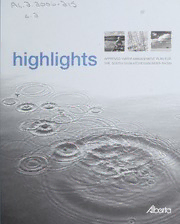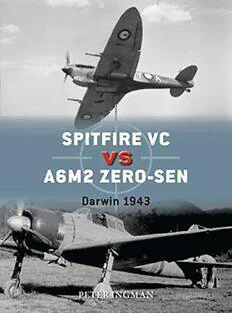
Spitfire VC vs A6M2/3 Zero-sen: Darwin 1943 PDF
Preview Spitfire VC vs A6M2/3 Zero-sen: Darwin 1943
SPITFIRE VC A6M2/3 ZERO-SEN Darwin 1943 PETER INGMAN SPITFIRE VC A6M2/3 ZERO‑SEN Darwin 1943 PETER INGMAN CONTENTS Introduction 4 Chronology 7 Design and Development 9 Technical Specifications 17 The Strategic Situation 24 The Combatants 31 Combat 49 Statistics and Analysis 75 Aftermath 77 Further Reading 79 Index 80 INTRODUCTION The Spitfire and the A6M Zero‑sen were two fighter aircraft with amazing similarities. Both saw their major combat debut in 1940 and both quickly achieved an almost mystical reputation as deadly aerial fighting machines. Indeed, the two types famously made critical contributions to the winning of key campaigns – the Spitfire during the Battle of Britain and the Zero‑sen during Japan’s lightning conquest of Southeast Asia at the start of the Pacific War. 4 A duel between the Spitfire I and the A6M2 during this early war period would have been a fascinating prospect for aviation enthusiasts. While this never happened, Spitfire VCs of No. 1 Fighter Wing, Royal Australian Air Force (RAAF) did meet Zero‑sens of the Imperial Japanese Navy Air Force (IJNAF) during the 1943 dry season campaign over Darwin in northern Australia. While an improvement on the Mk I, the Mk VC was still sufficiently close to the original Spitfire design to be a reasonable match for the Zero‑sen. As will be seen, the results of this campaign were perhaps surprising, and a product of many contributing factors, some of which have been topics of much controversy since the end of the war. Aside from the three units that made up No. 1 Fighter Wing (Nos. 452 and 457 Sqns (RAAF) and No. 54 Sqn (RAF)), two other RAAF squadrons flew the Spitfire VC. No. 79 Sqn deployed to Goodenough Island, off the eastern tip of New Guinea, in June 1943. Despite being just 400 miles from the major Japanese stronghold of Rabaul, the unit had a relatively quiet time in respect of aerial combat and did not meet a single Zero‑sen during several months in the area. No. 85 Sqn operated Mk VCs from September 1944 until the end of the war, although it remained exclusively in Western Australia all this time and never encountered the enemy. Where else might the Spitfire and Zero‑sen have met in combat? Three Royal Air Force (RAF) units – Nos. 136, 607 and 615 Sqns – flew Mk VCs in Burma from late 1943, and they narrowly missed seeing combat with A6Ms that were escorting bombers during a raid on the Indian city of Calcutta on 5 December 1943. This attack was most unusual because it proved to be the only time IJNAF fighters escorted Imperial Japanese Army Air Force (IJAAF) bombers during the entire Burma campaign. Most of the time the Spitfire’s adversaries in‑theatre were IJAAF Ki‑43 ‘Oscar’ and Ki‑44 ‘Tojo’ fighters. From early 1944 fighter squadrons in Burma began re‑equipping with Spitfire VIIIs, which were vastly superior to the Mk V in respect to their performance. Mk VIIIs also subsequently served in the Netherlands East Indies (NEI), although there was little chance pilots flying these machines would engage Zero‑sens in combat by this late stage in the conflict. Details of these campaigns can be found in LEFT Osprey Aircraft of the Aces 87 – Spitfire Aces of Burma and the Pacific by Andrew A trio of pilots from No. 54 Sqn practice formation flying near Thomas. In 1945, carrier‑based Seafires, developed from the Spitfire, saw combat Sydney in January 1943 prior to against A6M5s off Japan, as chronicled in Osprey Duel 16 – Seafire versus A6M Zero moving north to Darwin, where all by Donald Nijboer. three aircraft were to be used to So, the only sustained combat between the Spitfire V and A6M2 Zero‑sen took claim victories. Nearest is place over Darwin in 1943. At that stage of the war, the IJNAF still had a strong cadre BS164/K, in which Sqn Ldr Eric ‘Bill’ Gibbs made all of his claims of experienced pilots, although they were steadily being diluted owing to growing (five and one shared victories attrition in combat. They faced a group of Australian and British pilots led by and five damaged). Next is Wg Cdr Clive Caldwell, the leading Australian ace of the war and the highest‑scoring BR544/A, which Flt Lt Robin P‑40 pilot of any nationality. Norwood was flying when he was Because of the geographical isolation of Darwin, the two combatants – No. 1 credited with shooting down a Fighter Wing and the 202nd Kokutai – would meet each other repeatedly, and largely Zero‑sen on March 15. The third Spitfire VC is BR539/X in which Flt without prospect of intervention by other fighter forces. During the 1942 bombing Lt R. W. ‘Bob’ Foster made most of campaign in northern Australia, after some initial reverses, Japanese pilots had his claims (three destroyed, one developed tactics such as flying at high altitude that resulted in not a single bomber probable and two damaged). being lost to defending United States Army Air Force (USAAF) 49th Fighter Group (Ralph Murphy) 5 (FG) P‑40 Warhawks for several months. However, flying at greater ceilings would offer no protection from the Spitfire VC, which gave its best performance at such high altitudes. The Commonwealth pilots flying the aircraft in the defence of Darwin entered battle confident of a decisive victory. JAPANESE TERMINOLOGY The IJN’s terminology used in this volume should be applied as broad guidelines only, and there are no exact Western equivalents. Confusion often arises with these terms, because the IJNAF used a complicated parallel organisational structure with terminology to match. Some terms refer to personnel within an administrative framework, which was firmly established, and others reflect tactical and operational aircraft formations. To confuse matters further, some of the terms listed here cover both aspects: Kokutai – an IJN air group, consisting of between three and six chutai Hikotaicho – commander of a kokutai Chutai – a sub‑unit of nine aircraft Chutaicho – leader of a chutai Buntai – equivalent to a chutai, but usually accompanied by administrative or established command status Buntaicho – leader of a buntai Shotai – a tactical formation typically of three aircraft (although sometimes two or four aircraft) Shotaicho – leader of a shotai Sentai – an operational formation of IJN warships (not be confused with the IJAAF term for an aerial formation, or hiko sentai) JAPANESE RANK ABBREVIATIONS FPO1c Flying Petty Officer First Class FPO2c Flying Petty Officer Second Class FPO3c Flying Petty Officer Third Class Sea1c Seaman First Class 6 CHRONOLOGY 1940 8 March Following the surrender of the NEI 10 July to Battle of Britain is fought and won on this day, the 3rd Kokutai can now 31 October by the RAF. The Spitfire I is largely largely concentrate on missions over tasked with taking on Luftwaffe Darwin. fighters – a role it performs superbly. 30–31 March First clashes between 3rd Kokutai 13 September In China the Mitsubishi A6M2s and 49th FG P‑40Es over A6M2 makes its combat debut when Darwin. 13 Zero‑sens engage 30 Republic of April The 49th FG succeeds in shooting China Air Force (RoCAF) Polikarpov down nine Takao Kokutai G4M I‑15 and I‑16 fighters near ‘Betty’ bombers during daylight raids Chongqing and give them a severe over Darwin. mauling. The IJNAF pilots down 28 May Prime Minister Winston Churchill 13 RoCAF aircraft without loss. agrees to send three Spitfire squadrons to Australia. 1941 May – August Peak of 1942 dry season campaign. 10 September The 3rd Kokutai is re‑organised as a The 3rd Kokutai increases Zero‑sen fighter unit equipped with escorts and no further ‘Bettys’ are lost A6M2 Zero‑sens. to 49th FG P‑40Es. 8 December The 3rd Kokutai flies the first June During a brief attachment to the long‑range fighter escort mission Kenley Wing, Wg Cdr Clive from Formosa to Luzon. In a series of Caldwell flies Spitfire VBs over IJNAF raids, the United States Army France and learns ‘Balbo’ tactics. Air Corps (USAAC) in the August First six Spitfire VCs arrive in Australia. Philippines suffers severe losses. September A 3rd Kokutai detachment is sent to 1942 Rabaul to assist with Guadalcanal January T he 3rd Kokutai ranges over the NEI operations. – February and destroys dozens of Allied aircraft 7 October No. 1 Fighter Wing formally raised during a series of successful at RAAF Base Richmond, made up long‑range missions. of Nos. 452 and 457 Sqns (RAAF) 19 February Darwin is devastated during a and No. 54 Sqn (RAF). Caldwell is massive raid by more than made Wing Commander (Flying) 200 aircraft from four aircraft carriers three months later. and two land‑based bomber kokutais. 1 November The 3rd Kokutai is redesignated 3 March Nine A6M2s of the 3rd Kokutai 202nd Kokutai. launch a devastating raid on Broome 1943 from Koepang, on the island of January Spitfire VCs make 2,000‑mile ferry Timor, 600 miles away. Twenty‑three flight from Sydney to Darwin. aircraft (including a number of 7 seaplanes) are destroyed. February No. 1 Fighter Wing takes 30 June First attack on Fenton airfield, south responsibility for air defence of of Darwin. Seven Spitfires lost. Darwin. 6 July Second attack on Fenton airfield, and 6 February No. 54 Sqn shoots down a another seven Spitfires are lost. Ki‑46 ‘Dinah’ reconnaissance aircraft 18 July No. 457 Sqn shoots down a ‘Dinah’, for No. 1 Fighter Wing’s first aerial killing both crew. One of the latter is victory. Capt Shunji Sasaki, CO of the 70th 2 March First clash between No. 1 Fighter Dokuritsu Hiko Chutai. Wing and the 202nd Kokutai during 13 August ‘Bettys’ revert to night raids. a low‑level Zero‑sen raid on the 17 August Four ‘Dinahs’ are downed by No. 1 airfield at Coomalie Creek, south of Fighter Wing. Darwin. 7 September Last Spitfire versus Zero‑sen combat. 15 March First interception by Spitfires of 27 September Last Zero‑sen mission over Australia, ‘Bettys’ with Zero‑sen escorts over when four A6M2s escort 21 IJAAF Darwin. Ki‑48 ‘Lily’ bombers in an attack on 2 May Controversial large scale combat in Drysdale Mission and airfield in which 14 Spitfires are lost, some after Western Australia. running out of fuel. 10 May First strafing attack on the airstrip on 11 November ‘ Betty’ shot down by No. 457 Sqn at Milingimbi Island, 270 miles east of night, resulting in cancellation of Darwin. Japanese offensive missions over 28 May Second Milingimbi attack, and four Australia ‘Bettys’ are lost. 20 June Only IJAAF raid on Darwin. 28 June Darwin raid by ‘Bettys’, with Zero‑sen escort. An A6M2 Zero‑sen of the 3rd Kokutai at Lakunai, Rabaul, in September 1942. It was this unit, renumbered as the 202nd Kokutai, that fought so effectively with Spitfires over Darwin in 1943. Note the width of the fighter’s rugged landing gear, which allowed the Zero‑sen to operate safely from the 8 rough landing fields of the NEI. (Tony Holmes Collection) DESIGN AND DE VELOPMENT No. 54 Sqn Spitfire VC AR564/DL‑L over typical northern Australian terrain, its now‑famous elliptical wings (a major factor in the aircraft’s excellent performance characteristics as a fighter) being clearly visible from this angle. The During 1940–42, the Spitfire and the Zero‑sen were the stand‑out fighters of the unit’s ‘DL’ fuselage code differed European and Pacific theatres, respectively. Both became known as agile, from the ‘KL’ codes it had long used when based in Britain. Flt Lt Robin high‑performance aircraft that were feared by their adversaries. However, each came Norwood may have had some from opposite ends of the design spectrum. The Spitfire was a short‑range defensive influence in this choice as his wife’s interceptor, while the Zero‑sen was intended for long‑range offensive missions. two given names were Dorothy The Vickers Supermarine Spitfire traced its lineage back to a private initiative by Langridge. (Ralph Murphy) its designer, Reginald J. Mitchell, following which the Air Ministry subsequently wrote a formal specification around the aircraft. Prototype K5054, which flew for the first time on 5 March 1936, featured streamlined stressed‑skin construction, a retractable undercarriage and, eventually, an armament of eight 0.303‑in. Browning machine guns. The latter were mounted within the aircraft’s distinctive elliptical wings and fired from outside of the propeller arc, thus avoiding the need for a synchronising mechanism and the complications that were associated with such devices. 9 Arguably the two standout features of the Spitfire prototype were its engine and wing. The Rolls‑Royce PV‑12 installed in K5054 evolved into the exceptional Merlin that proved capable of being developed into successively more powerful versions of the same basic engine. The elliptical wing shape helped give the Spitfire its characteristic appearance. Engineered primarily to fit the eight machine guns stipulated by the Air Ministry specification, it so happened to be one of the best fighter wings of its era. Indeed, during World War II Spitfires proved capable of sustaining dives of Mach 0.9, which was faster than that achieved by some early jet designs. While Britain possessed a potentially world‑beating fighter design in the late 1930s, it proved difficult to adapt the Spitfire’s advanced stressed‑skin design to mass production techniques. This in turn meant that the Vickers Supermarine aircraft was slow to enter service in quantity and was greatly outnumbered during the Battle of Britain by its less glamorous counterpart in Fighter Command, the Hawker Hurricane. In January 1942, it was Hurricanes that were rushed to the Far East and saw combat against IJAAF and IJNAF fighters and bombers as the latter swept all before them in the skies over Singapore, Java and Ceylon. Only in 1943 were Spitfires finally available to defend northern Australia. The Mitsubishi A6M Zero‑sen, meanwhile, was born from an IJNAF specification to replace the Mitsubishi A5M carrier fighter. Featuring stressed‑skin construction like the Spitfire, the A6M was among the first mass‑produced fighters to feature wing‑mounted cannon in the form of two Type 99‑1 20mm weapons. Although capable of inflicting considerably more damage than rifle‑calibre machine guns, the Type 99‑1 possessed a slow rate‑of‑fire and a low muzzle velocity, which reduced the weapon’s effectiveness in aerial combat. The Zero‑sen prototype first flew on 1 April 1939 – a full three years after the Spitfire. It showed exceptional performance characteristics, although the definitive A6M2 design did not emerge until December of that year in the form of the third prototype. Spitfire VC EE853 (A58‑146) on display at the South Australian Aviation Museum in Adelaide. This example was recovered from New Guinea (in 1973 by Langdon Badger), where it had served with the RAAF’s No. 79 Sqn until written off in a landing accident in August 1943. However, it is identical to the Mk VCs that flew with No. 1 Fighter Wing over Darwin that same year. Note the barrel for the single 20mm cannon protruding from the port wing (a second cannon could be housed in the stub alongside it, although Spitfires flown in Australia had only a single 20mm weapon per wing) and the two ports further outboard for the 0.303‑in. machine guns. 10 (Author’s collection)
The list of books you might like

Haunting Adeline

$100m Offers

The Sweetest Oblivion (Made Book 1)

Rich Dad Poor Dad

Crime Scene Investigation
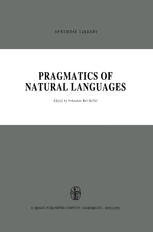
Pragmatics of Natural Languages

Office Ergonomics
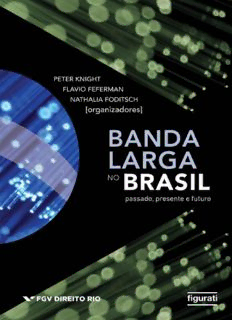
Banda Larga no Brasil : passado, presente e futuro

Greek Government Gazette: Part 1, 2008 no. 31

NASA Technical Reports Server (NTRS) 20100017776: Results and Analysis from Space Suit Joint Torque Testing
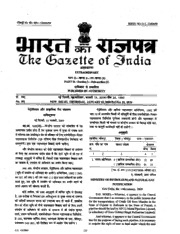
Extraordinary Gazette of India, 2009, No. 107
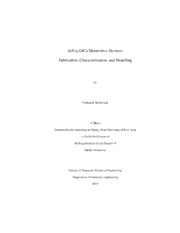
DTIC ADA567650: Al/CuxO/Cu Memristive Devices: Fabrication, Characterization, and Modeling
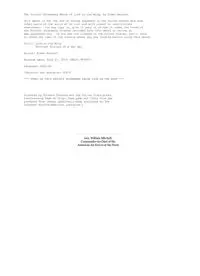
Luck on the Wing by Elmer Haslett
![SL(n,Z[t]) is not FP_{n-1} book image](https://cdn.pdfdrive.to/media/content/thumbnails/d5139d6f-df0f-47ff-a92e-7a36e43ce044.webp)
SL(n,Z[t]) is not FP_{n-1}

Catesbeiana : bulletin of the Virginia Herpetological Society
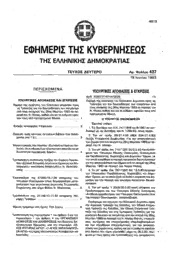
Greek Government Gazette: Part 2, 1993 no. 437

Montala

Enterprise DevOps for Architects
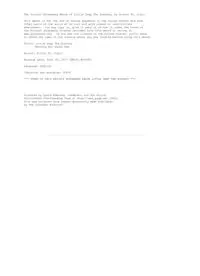
Little Snap The PostBoy by Victor St Clair mdash

Town of Stoneham Annual Report

International Journal of Coal Geology 1993: Vol 24 Table of Contents

Statistical Challenges for Searches for New Physics at the LHC
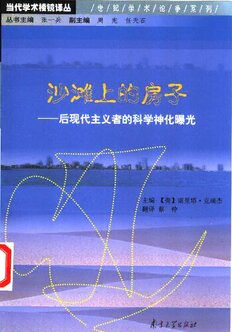
沙滩上的房子: 后现代主义者的科学神话曝光 (A House Built on Sand: Exposing Postmodernist Myths About Science)
